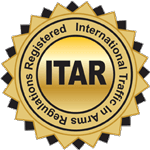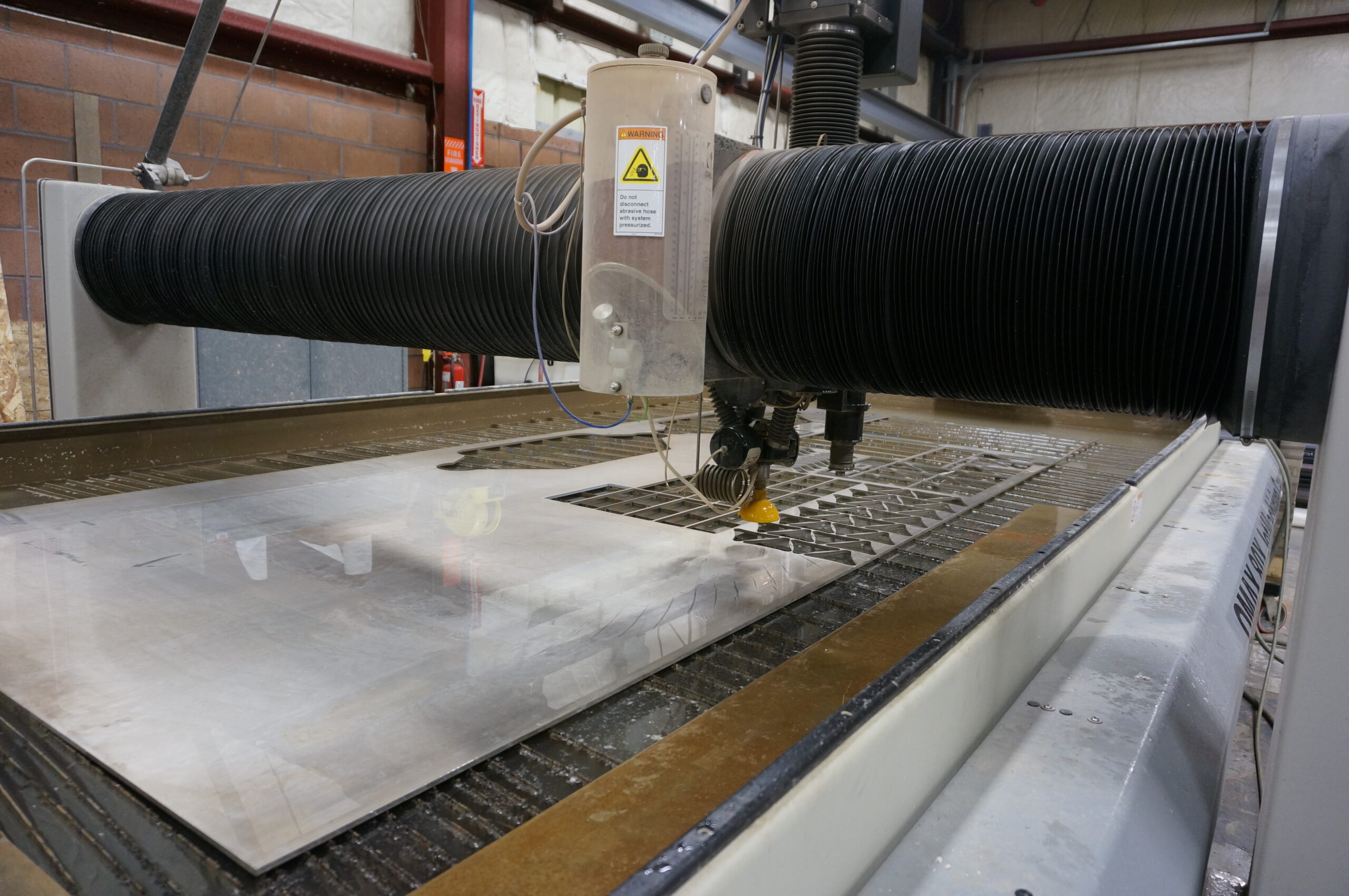When comparing water jet cutting vs. laser cutting, both methods are used in precision manufacturing. Water jet cutting requires water pressurized up to 60 thousand psi (pounds per square inch), enabling it to cut through sheet metal, ceramics, stone, and even steel. Water jets can cut through thicker materials than can be cut via lasers, which is one reason the water jet method is still popular in precision manufacturing.
Laserjet cutting uses high-density laser beams that vaporize the material it contacts to create clean, smooth cuts. Able to slice through the material in a highly accurate manner, laser cutting can shape specialized and complex components for a variety of industries. Laser cutting has also proved to provide operational consistency with significant repeatability, making it suitable for the mass production of workpieces with tight tolerances.
By contrast, water jet cutting utilizes water-containing abrasive materials like aluminum oxide or garnets to cut material via abrasion. Water jets can cut through several inches of metal, making it a much better technique for making complex parts from thick material. Since this method doesn’t generate heat, it also works well for parts that can be warped by heat. Like laser cutting, water jet cutting utilizes advanced software to coordinate cutting during production.
When assessing these precision cutting services, it’s important to note that one is not necessarily better than the other – in fact, they complement each other. Having both processes available under one roof, as we offer at Staub, is ideal because they are used for different applications. Each process is constantly being improved and has its own nuances, making it essential for customers to understand what the requirements and end results are.
Advantages of Water Jet Cutting & Laser Cutting
When looking at water jet cutting vs. laser cutting, both have advantages over other methods, which is why these two cutting techniques are the most widely used for precision manufacturing. Though one process is not necessarily better than the other, depending on the material, application, or specifications, one method usually works better. Yet both offer a few common advantages.
Shared advantages of water jet cutting and laser cutting include:
- Generate high-quality components quickly.
- Handle many metals and other materials; both cutting methods are highly customizable.
- Produce results consistently, enabling the repeatability necessary for mass production.
- Support automated processes due to the precision and accuracy of both techniques.
- Take off thin slices of material to fine detail and create intricate workpieces.
When it comes to water jet cutting vs. laser cutting, both are ideal for a wide range of applications in industries that include aerospace, automotive, chemical, medical, and power generation. In summary, laser cutting works better for precision applications that require highly detailed cutting. In contrast, water jet cutting has almost no restrictions on the material it can cut and works better when producing thicker workpieces.
Ready to automate your next job?
VIEW OUR EQUIPMENT
When & How to Use Water Jet Cutting vs. Laser Cutting
Both lasers and water jets can be used to cut tough materials like metals, though highly reflective metals are better cut with water jets. Depending on the water pressure applied and the abrasives, water jet cutters can cut through most materials, going deeper than lasers.
Yet when comparing water jet cutting vs. laser cutting, there are a few significant differences between the two that favor water jet cutters. While advances in laser technology have allowed laser cutters to work with metals and alloys like aluminum, stainless steel, and mild steel, laser cutting isn’t suitable for cutting hard stones like marble or granite.
Since water jet cutting doesn’t produce heat, it also optimizes production. Eliminating heat from cutting allows workpieces to move straight from water jet cutting to welding or threading operations without needing a cool-down period. Due to the heat zones that laser cutting can create, water jet cutting techniques are better for certain aerospace applications, as water jet cutters won’t warp or alter material during cutting. Additionally, water jet cutting produces such clean cuts, making sanding and grinding unnecessary.
Pros & Cons: Water Jet Cutting vs. Laser Cutting for Material Processing
As common methods used in precision manufacturing processes, both water jet cutting and laser cutting offer a means to remove unwanted material from blocks of metal and other materials. Though both are versatile techniques that can be utilized in precision manufacturing, the technique used largely depends on the application. Further, each method has its pros and cons when it comes to cost, precision, processing speed and the types of materials with which each method works best.
For example, laser-driven cutting machines require no tooling, as they’re programmed to precisely cut along specific pathways. Meanwhile, water jet cutters require water to cut and cool, along with an abrasive medium combined with the water, so these cutting machines have higher tooling costs. Additionally, there’s a propensity for wear with water jet cutters, especially for components like nozzles and seals, which adds to maintenance costs.
While water jet cutters can achieve precision to 0.02 inches (0.508 mm), laser cutters cut down metals to tolerances approaching 0.005 inches (0.127 mm). This precision allows laser cutters to engrave and etch material along with cutting it. This greater precision allows manufacturers to add assembly marks, intricate designs and serial numbers to workpieces. Water jet cutters are also slower, capable of cutting 20 inches (50.8 cm) per minute at best, while laser cutters can cut up to 70 inches (177.8 cm) per minute. However, one of the prime advantages when comparing water jet cutting vs. laser cutting is that water jet cutters can use four different cutting tools simultaneously, so offer greater speed and versatility when cutting in three dimensions.
Another important consideration when comparing water jet cutting vs. laser cutting involves the material that needs to be cut. Though water jet cutters aren’t appropriate for tempered glass and diamonds, they can cut through just about any other material. While laser cutting also works with a wide array of materials – Including metals, plastics and wood – it’s not appropriate for thermolabile materials that react poorly when heated or those with reflective properties that reduce a laser’s ability to heat the material so that it melts or vaporizes. Water jet cutting offers a much better option for such materials, as it uses water under high pressure rather than light-based heat to cut through material. Further, water jet cutting machines can cut through substrates up to 2 inches (5.08 cm) thick.
Ready to talk about your next project?
CONTACT US TODAY
Contact the Precision Experts at Staub Precision Machine, Inc.
Staub Precision Machine, Inc. has a full catalog of equipment and automation solutions that allows us to provide results regardless of complexity. This includes premium water and laser jetting equipment that offers material forming for a full range of materials regardless of complexity, size, or thickness. Our advanced equipment allows us to produce high-quality parts efficiently and cost-effectively with the precision required by the strictest of industries. Utilizing the most advanced computer control systems, our equipment offers no-to-minimal heated affected zones, mechanical stresses, and smooth edges to reduce secondary operations required for your project. Staub provides collaborative solutions through our sophisticated machinery and cutting-edge systems to best meet our customer’s production needs. Inquire about your next project with the advanced manufacturing experts at Staub today.



